Newsletter

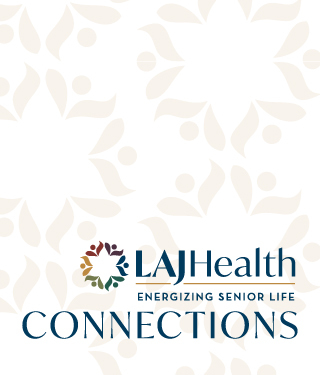
Our Newsletter
Connections
Feb
10
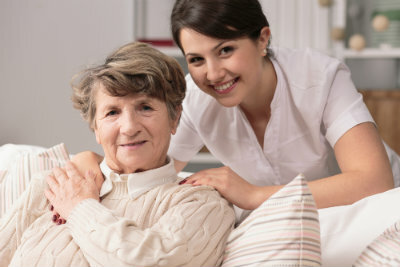
Honoring Family Caregivers
This year on National Caregivers Day, February 17th, we acknowledge the caring individuals who dedicate countless hours providing compassionate care to their senior loved ones.
In the United States, 44 million people —about one in five American adults—act as unpaid, family caregivers.
Day and especially night, caregivers make meaningful contributions to help maintain the well-being of the senior they care for. They provide assistance through a variety of services—meal preparation, hygiene, housekeeping, shopping, transportation, medication, companionship, and financial support to name a few.
Informal caregivers act as the unsung heroes of a senior’s care team. Caregivers become personal advocates and care coordinators for their loved ones— communicating with medical professionals, performing difficult nursing tasks, and navigating the health care system.
Despite their important role, most family caregivers do not receive the training, preparation, or ongoing support they need.
The National Family Caregiver Support Program (NFCSP), established in 2000, provides support and assistance to family caregivers so they can care for their loved ones at home for as long as possible. Caregivers can access counseling, training, respite care, and supplemental services through the Administration on Aging website.
Through the loving care they provide, caregivers are able to form a close bond with their frail family member. Caregivers often gain a better understanding of their family member’s medical condition and experience a sense of relief from knowing their loved one is well cared for.
While providing care for a family member can be a very rewarding personal experience for a caregiver, it can take a serious toll on the person’s career, family life, financial situation, quality of life, and overall health. Caregivers can become over-stressed and exhausted or experience an increased risk of depression or excessive use of alcohol, tobacco, and other drugs. They are also more likely to have a chronic illness such as heart disease or obesity. Caregiver burnout is a common cause of hospitalization of the frail elderly and has been shown to be a factor in elder abuse cases.
“In order to continually provide high quality care, caregivers must first focus on their own self-care,” says Dr. Noah Marco, chief medical officer of the Jewish Home. “By regularly practicing self-care activities such as maintaining a balanced diet, exercising regularly, engaging in social activity, getting enough sleep, and making a yearly visit to a doctor, caregivers can enhance their physical, mental, and emotional health, allowing them to better serve their loved ones for many years to come. The third law in the classic novel House of God by Samuel Shem was 'At a cardiac arrest, the first procedure was to take your own pulse.' The rule is also appropriate for people providing care to their family members."
To all caregivers— thank you for your commitment to providing compassion and care to those who need it most.
Jan
26
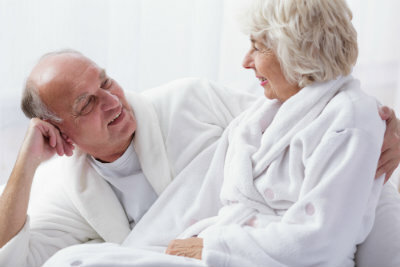
Seniors and Sexuality
While the media is known for portraying sex as something meant for only the young and beautiful, more and more seniors are finding a gratifying sex life is attainable and enjoyable at any age.
Seniors who frequently engage in sexual activity enjoy the benefits of boosted immunity, lower blood pressure, pain relief, and better sleep. Through these intimate encounters seniors strengthen the physical and emotional connection with another person, combating feelings of isolation, depression, and loneliness. Sex can also enhance one’s mood, self-confidence, and overall health. Seniors who engage in sexual activity regularly tend to be happier, healthier, and more satisfied with life
For many, sex gets better with age and experience. In the latter years of life, we tend to become more patient and attentive to our partner’s needs. Additionally, by this stage in life most people have learned what brings them the most pleasure, and are more inclined to share this information with their partners.
Another great benefit of having intercourse after menopause is that there is no need to worry about an unwanted pregnancy; however, sexually transmitted diseases (STDs) pose a risk to all who engage in sexual activity, no matter their age. The Centers for Disease Control reports only 6% of adults over the age of 61 use condoms in sexual encounters. STDs are often left undiagnosed in aging adults and can complicate pre-existing medical conditions. In order to prevent the spread of these dangerous diseases, seniors should always practice safe sex.
While sex can be pleasurable and beneficial at any age, seniors may experience many physical changes and medical issues that make it more difficult. Changing hormone levels, illness, chronic pain, and disability can greatly affect a senior’s satisfaction and performance in the bedroom. Additionally, drugs, alcohol, and some prescribed medications can lead to sexual problems such as decreased libido, erectile issues, and delayed orgasms. Feelings of depression, anxiety, stress, and insecurity may also affect one’s ability to perform sexually.
"Seniors should feel comfortable discussing their sex life with their healthcare providers." says Dr. Noah Marco, chief medical officer of the Jewish Home. "Senior sex is natural and healthy, and most doctors are comfortable and experienced with helping their patients maintain an active sex life. Clinicians can diagnose and treat STDs with simple exams and tests. Doctors can also suggest ways to improve one’s sexual experience, and prevent sex-related injuries and accidents. Because of physical changes caused by aging and some diseases, seniors (both men and women) will often need to be prescribed medication in order to have intercourse. Remember, your healthcare provider’s goal is to help you maintain all the things that you enjoy doing so don’t be hesitant if one of the things that you need help with is your sex life."
Jan
12
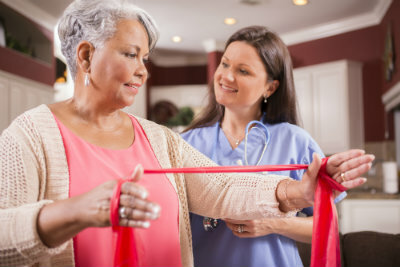
Getting Acquainted with Home Health Care
What is Home Health?
Jewish Home Care Services – a home health program of the Los Angeles Jewish Home – is a full suite of doctor-prescribed restorative services completed in the individual’s home. Medical care, social services, and more are provided according to a personalized plan of care jointly developed by the referring physician, the person receiving care, the caregiver, and others.
What services does Home Health provide?
Skilled nursingPhysical, occupational, and speech rehabilitation therapiesMedication infusionPain managementWound careVaccinationHome safety assistanceBathingDressingGroomingEatingExercising
Who needs Home Health?
Adults over 19 years of age in the Greater Los Angeles area.Adults who have health problems and need careful monitoring and the support of medical professionals in the comfort of their own home.Adults who can learn how to better manage and monitor their conditions, preventing future hospitalizations.Adults who will benefit from therapy services to improve their strength and overall health so they can safely navigate their environment.Patients who are returning home after surgery and need care, training, or assistance with health conditions, medications, and therapy.Patients who have complex treatments that require the use of medical equipment and/or medication monitoring.Patients who are recovering from accidents or injuries, and whose caregiver could manage their care when educated by a professional home health staff.Patients and caregivers who want peace of mind knowing that an experienced healthcare worker will be there when needed.Patients who are under the care of a physician who determines the medical necessity of the care and the provision of service by a skilled nurse and/or therapist.Millions of Americans with acute, chronic, or exacerbated diseases, conditions, and disabilities, such as Alzheimer's disease, heart disease, heart failure, stroke, kidney disease, respiratory disease and lung conditions, diabetes, or musculoskeletal conditions, such as arthritis.
How can I get Home Health care?
For more information about Jewish Home Care Services, please contact Karine Keshishyan, Home Health Administrator, 818.655.0411, or [email protected].
Dec
22
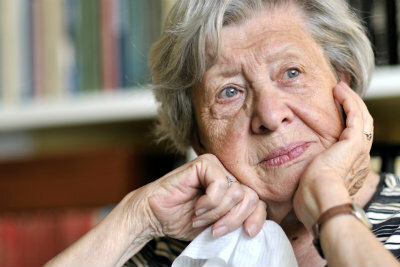
Recognizing and Reducing Anxiety
Anxiety, an experience of tension and apprehension, is an ordinary response to a threat or danger. Excessive anxiety that causes distress or interferes with daily life is not a normal part of the aging process. Michael Fresé, Ph.D., is a clinical psychologist specializing in geropsychology. He recently sat down with e-Connections to talk about the signs and symptoms of anxiety among seniors.
Have you experienced heart palpitations, feeling out of breath, or a sensation of being suffocated? Are there times when you sense numbness or tingling in your fingers, chills or hot flashes, restlessness? How about difficulty concentrating, memory gaps, irritability, or feeling like you are at the end of your rope? If so, you might be experiencing anxiety or have an anxiety disorder.
Among older adults, many worry about their increasing number of health issues, family, limited finances, and their own mortality. More often than not, these worries can become exacerbated when individuals experience either a mental or physical decline and a loss of autonomy. When the anxiety is at a level which causes significant impairment in daily functioning and is a source of distress, it is considered an anxiety disorder.
Some of the causes of anxiety in older adults include losses during the aging process (loss of autonomy, health, intellectual capacity, loved ones) as well as having thoughts of danger and vulnerability associated with losses.
Similar to depression, when asked, many older adults deny feeling anxious. Individuals might admit to feeling overwhelmed, worried, having a short fuse, or experiencing physical sensations that they attribute to old age. In addition to the symptoms listed above, it is important to inquire about the following:
Appetite: individuals who are anxious might overeat to calm themselves, resulting in weight gain or they may lose weight by skipping mealsGoing out: anxious individuals might stay at home to avoid their fearsInterests: those who are anxious have a difficult time finding pleasurable activities as they become more fearfulPhysical complaints: as older adults are more likely to report physical causes of their anxiety symptoms (as well as experience medical conditions that might overlap the symptoms of anxiety), asking about such physical complaints as chest pain or shortness of breath is importantSleep: People experiencing anxiety might sleep to avoid their fears or have difficulty sleeping due to ruminating about imagined or exaggerated fearsSocial isolation: social contact and activity is important for lifting a person’s spirit and calming their fears; however, sometimes a person’s anxiety is such that they find a false sense of security in being alone, which can increase their level of anxiety and result in a vicious cycle.
You might be saying to yourself, “that sounds like me!,” or “that sounds like someone I know!” and you are curious to know what you can do to help yourself or a loved one.
For some, a family member or friend might be able to provide comfort and reassurance. For others, being engaged in creative, social, or other activities that are of interest can be helpful. Getting to the source of the anxiety and dealing with it directly is very important. For example, helping older adults deal with concerns about being a burden, financial matters, and health issues can make a difference.Psychotherapy such as cognitive behavioral therapy, problem solving, and interpersonal psychotherapy are all effective ways of helping those with anxiety. Psychoeducation and support in managing anxiety in structured ways, such as progressive muscle relaxation and deep breathing, have been shown to reduce anxiety.When psychotherapy alone isn’t enough, psychiatric medications such as Ativan, Klonopin, or Xanax might be prescribed by a psychiatrist.
If you find yourself feeling anxious, overwhelmed, or worried, don’t hesitate to ask for help, whether from a family member, friend, or healthcare professional. Anxiety can be managed and treated, and your quality of life can be improved.
Dec
2
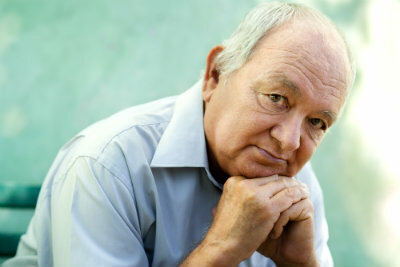
Depression in Older Adults
While the holiday season is a festive time, it can also bring sadness for those that may be alone or missing loved ones. For many, this sadness is situational, brought about by the holidays. For others, it could be much more. Michael Fresé, Ph.D., is a clinical psychologist specializing in geropsychology. He recently sat down with e-Connections to talk about the signs and symptoms of depression among seniors.
Do you feel down and depressed, more days than not? Have you lost interest and pleasure in activities you once enjoyed? Are you experiencing difficulty with your appetite, energy level, sleeping? Have you been feeling helpless, hopeless, or very tired?
If you can answer yes to some of those questions, you might be depressed.
As we age, we often experience the many changes associated with later life – death of loved ones, worsening medical issues, retirement – and depression can creep in like a thief in the night. It can happen when we least expect it and we may not even notice it. Often times, it is our family members and friends who recognize the change in our mood. Depression, however, doesn’t only affect mood - it can impact our appetite, concentration, energy level, memory, physical health, and sleep.
As the symptoms of depression vary from person to person, there are several red flags to be aware of:
SadnessSleep disturbances (insomnia, hypersomnia)FatigueFeelings of worthlessness, self-loathing, worry about being a burdenLosing interest or pleasure in activities that you once enjoyed and looked forward toIsolation and social withdrawal (not returning phone calls, reluctance to have visitors)Loss of appetite and/or weight lossFixation on death, suicidal thoughts or attempts
When asked, many depressed older adults deny feeling sad. Physical complaints such as increased arthritic pain, gastrointestinal distress, or more pronounced back pain are often the symptoms of depression. If you suspect an older adult might be depressed yet they deny feeling sad or depressed, ask yourself if you have noticed any of the following symptoms:
Anxiety and worriesDifficulty concentratingFeelings of helplessness and hopelessnessIrritabilityLack of motivation and energyLoss of interest in socializing and participating in activities/hobbiesMemory difficultiesNeglecting personal care (forgetting medications, neglecting personal hygiene, skipping meals)Slowed movement and speechUnexplained aches and pains
While depression is a common problem in older adults, it is often overlooked or not taken seriously. People might believe that they have good reason for feeling blue, or that being depressed is part of growing old. Social isolation, which can lead to depression, may result in few social contacts who would notice an individual’s distress. Often times, people don’t realize the relationship between physical pain and emotional pain. Further, people are often reluctant to talk about their feelings or ask for help.
There are many causes of depression in older adults, including (but not limited to): fears, health issues, isolation/loneliness, loss of identity/reduced sense of purpose, and recent bereavements. Several medical conditions can cause depression in older adults also, such as cancer, COPD, diabetes, lupus, heart disease, multiple sclerosis, Parkinson’s disease, stroke, thyroid disorders, and vitamin B12 deficiency.
If you or a loved one are depressed, the best thing to do is to address it- whether through exercise, social contact with others, or seeking help from a psychologist. The more active you are – mentally, physically, and socially- the better you will feel!
Dec
2

Crafting a Care Plan with a Senior Loved One
For many aging adults and their loved ones, discussing plans for future care can be a sensitive topic. Jewish Home Chief Medical Officer Dr. Noah Marco shares how important it is to have the discussion and suggests a few ways families can ease into the conversation.
While nearly 90% of American seniors over the age of 65 plan to live independently for as long as possible, many find illness and other life events can greatly affect a senior’s desire and ability to live safely on their own.
Aging adults might experience difficulty completing household chores, running errands, and even taking care of their personal needs. For many, the humbling experience of admitting they need help with daily activities can become a source of embarrassment or anxiety. Therefore, they tend not to express to others the challenges they are having.
Often, family and friends are the first to trigger the discussion. That is why it is important for family member to watch for changes in their loved one's appearance, behavior, and physical ability. An example would be the seniors leaving the stove on and burning a pot.
A shift in the aging adult’s aptitude to complete everyday tasks can signal the opportune time to discuss plans for the future. Being proactive in partnering with the senior to select the right care plan can save family and friends from making difficult decision in a moment of crisis later on.
If the senior is capable, he/she should be as involved as possible in the decision making. During the discussion, loved ones should actively listen and be respectful of the senior’s preferences, concerns, and decisions. Family members can start the conversation by asking their loved one to share their thoughts, feelings, and opinions on creating a plan for the future.
A great way to stimulate a meaningful discussion is to ask, "If something happened that would mean you could no longer live in your home safely, what would you want to do?" Your follow up questions and answers should then be based on how the seniors responds. I often supplement these discussions with the phrase, "I am wishing for the best (that you can always stay in your home), but I think we also need to plan for the worse (you having to leave your home, or have someone care for you in your home)."
Ideally, this is not a talk that occurs just once. Care planning works best as an ongoing conversation for seniors and their loved ones. Getting input from a trusted medical professional is advisable. The senior’s doctor(s) can provide insight and offer expert advice tailored to each senior's situation.
Although the discussion can be a lengthy and challenging experience, it is important to remember all parties involved are working toward creating a future where the senior is safe, happy, and healthy.
To connect with the Jewish Home’s expert staff and learn about the full continuum of quality senior care, call our toll-free Connections to Care hotline: 855.227.3745 or visit our website.
Dec
2
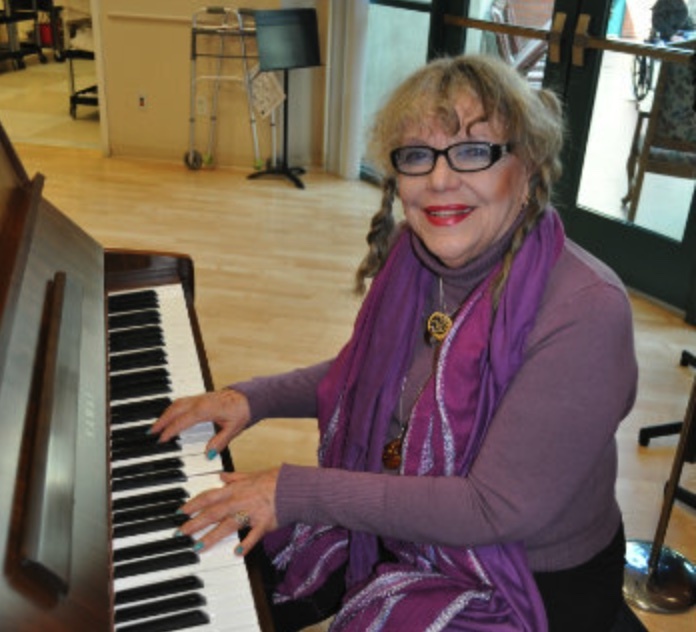
Michal Robins: Living Life to the Fullest
The meaning of life is to find your gift.The purpose of life is to give it away.~ Pablo Picasso
Finding one’s gift is often a lifelong pursuit. Sadly, many people never realize their gift, and others do but fail to act. For those who do realize their gift, it can become the driving force in their lives, enabling them to accomplish much, often beyond their dreams. Some fortunate individuals are blessed with multiple gifts, which combine to create a very interesting and meaningful life.
Los Angeles Jewish Home resident Michal Robins, age 75, is a musician, composer, singer, researcher, writer, and behavior therapist. As a young woman, she worked as a model in Israel and studied music at The Juilliard School; as an adult, she developed homes for people with developmental disabilities and provided music therapy at senior centers. Her talents have taken her from performing at the legendary Copacabana in New York City to opening a day care center for the elderly and disabled individuals in California. Her unique combination of gifts have led her to live a most interesting life.
Michal began studying piano with her mother at the tender age of four. Soon she was playing classical music and improvising jazz. Her musical talent resulted in a scholarship to Juilliard. After her studies, she returned to Israel, where she met her future husband, an American who volunteered in the Israeli Defense Forces (IDF) as a paratrooper. The couple lived in New York and Israel, and had three sons, Gabriel, Sinai and Shani. Michal continued her career as a singer, accompanying herself on the piano.
After 14 years of marriage, the couple went their separate ways; Michal and her sons relocated to Los Angeles, where she continued to pursue a career in musical entertainment. As the show business world began to lose its patina, Michal, now age 36, returned to school to pursue another interest: psychology. She first earned a bachelor’s degree in biology, then master’s degrees in clinical and experimental psychology. Her sons, motivated by her academic accomplishments, would go on to earn Ph.Ds. and become university professors, specializing in mathematics, computer science, and psychology, respectively.
Michal began her new career as a therapist and conducted workshops in anger prevention for universities and community organizations. She specialized in providing services to young autistic adults, helping them realize their own gifts. Her crowning achievement was collaborating with her son Shani to create The Wisdom Center, a state-of-the-art adult health day care (ADHC) center, offering extensive health services and activity programs for seniors and individuals with disabilities. Michal’s goal was to bring happiness into their everyday lives. As the economy turned downward and expenses rose, she had no choice but to make the difficult decision to close down the center.
“That was the saddest time in all of my careers,” says Michal. Not only had she lost all of her savings, she felt she had lost her purpose. Months passed as she searched for a way to try to find a similar path again. “I was lost.” Her sons, who knew how important giving is to her, became concerned about her state of mind. One day, they approached her with an idea: consider moving to the Jewish Home. They believed that at the Home, their mother would receive any help she needed, and, in return, she could help others by sharing her skills and knowledge. That was two and a half years ago, and Michal has not looked back. “The Jewish Home has totally rejuvenated me! Since the Home provides everything I need, I can devote my time to helping others and sharing my positive philosophy of life. It is so rewarding to share my experience with others.”
At the Home, Michal has created a new life, combining her two loves: music and helping others. She leads daily music sessions and entertainment for residents, provides musical accompaniment at Shabbat services, and teaches piano to members of the Home’s dietary staff. Michal also facilitates a class on staying young by appreciating the little things in life and diminishing negative thoughts, using her skills to help others navigate their own paths. She also finds time to write for the Home’s Chai Journal resident newsletter, plays piano for the resident choir, and teaches a weekly class in conversational Hebrew.
“I am by far the happiest I’ve ever been,” exclaims Michal. “I do exactly what I love to do, and I have so much fun doing it. It’s terrific!” She is living her personal motto – “Live, love, laugh, let it go, and let it be.”
Michal also has some sage advice for healthy aging. “Feel well – think young, take care of yourself and don’t focus on aches and pains; enjoy your time with friends, old and new; have fun doing whatever you enjoy; and give of yourself to others. It is amazing…The more you give and do for others, the more energized and happy you will be.”
Michal is preparing to take rabbinical and cantorial classes at American Jewish University. “There’s always so much more to learn,” she says.
At 75, she’s only just begun.
Oct
28
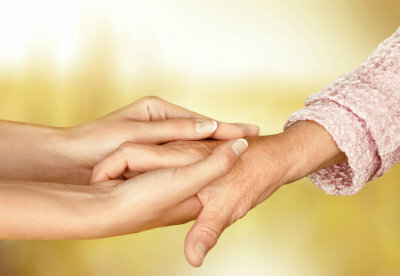
National Alzheimer’s Disease Awareness Month
November is National Alzheimer’s Disease Awareness Month. Today, 5.4 million Americans are living with Alzheimer’s and the number is rapidly growing.
Since 1983—the year President Ronald Reagan designated November as National Alzheimer’s Disease Awareness Month—the number of Americans living with Alzheimer’s has more than doubled. By the year 2050, the number of seniors aged 65 and older is projected to triple.
Although the risk for Alzheimer’s disease is higher than ever, making the decision to live a healthier lifestyle can help protect you. Here’s what you can do to reduce your risk of Alzheimer’s disease:
Maintain a healthy diet. Eating nutrient and vitamin rich fruits and vegetables regularly helps to improve cognitive function and enhance memory. Try adding fresh produce of all shapes, sizes, and colors to your daily meals.
Exercise often. Regularly participating in easy to moderate exercise increases blood and oxygen flow to the brain. Gradually build your strength, balance, flexibility, and endurance with a doctor approved exercise regimen.
Get enough sleep. Sleep is essential for brain function, memory retention, and emotional well-being. Getting the recommended 7-9 hours of sleep each night will help to reduce stress, improve productivity and focus, and enhance your mood.
Stimulate your mind. Studies show having a healthy brain may play a large part in reducing one’s risk of Alzheimer’s disease. Learning a new skill or language, attending a class or workshop, playing an interesting card or board game, or working on a challenging puzzle can help to keep your brain’s connections stimulated and strong.
Get involved. Adults who regularly volunteer are more likely to stay socially engaged which helps preserve cognitive ability and gives seniors the option to enjoy an active and independent lifestyle. Look for opportunities in your community where you can share your skills, wisdom, and talent with others.
Because much of Alzheimer’s disease research is inconclusive, there is still plenty for us to learn about this disease. Currently, no cure exists for Alzheimer’s. However, some medications can help to slow the disease’s progress. With so many unanswered questions about Alzheimer’s disease, it is more important than ever to take preventative measures to protect ourselves.
The Jewish Home's Goldenberg•Ziman Special Care Center (G•Z) provides exceptional care for individuals with Alzheimer's disease and dementia, and support for their families. The Center is known for its award-winning design, pioneering practices and technologies, and compassionate care.
"As an industry leader in dementia care, G•Z works closely with residents, families, and staff to spread awareness of Alzheimer’s disease within the community," G•Z community manager Susan Leitch says. "The Home offers a variety of informative training sessions for staff and community seminars like the Sarnat Symposium. With these critical tools, we are able to do our part and spread awareness of Alzheimer's disease, all while helping to provide our residents and their families with the highest quality of life possible."
To learn more about Alzheimer’s disease and National Alzheimer’s Disease Awareness Month, visit www.alz.org.
To learn about the Home’s Goldenberg•Ziman Special Care Center for Alzheimer’s disease and dementia care, please contact Susan Leitch, community manager, at [email protected] or (818) 774-3113 or visit our website.
Oct
28
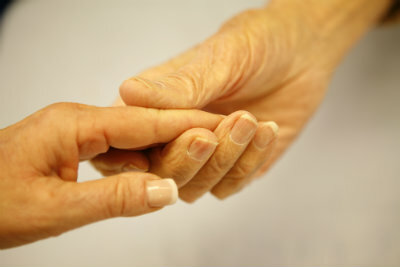
Palliative and Hospice Care: Know Your Options!
November is National Hospice and Palliative Care Month. During this time, hospices across the country are reaching out to raise awareness about the highest quality care for all people coping with life-limiting illness. This year’s theme is Know Your Options!
Being aware of your options before a medical crisis can help ease some of the stress that most people experience in that situation.
The Los Angeles Jewish Home offers both palliative and hospice services through Skirball Hospice and the Jewish Home Center for Palliative Medicine. Let’s take this opportunity to explore what each service offers.
“Palliative” means to relieve or lessen without curing. Palliative medicine is often thought of as only a part of hospice care provided to someone who has been diagnosed with a fatal disease or illness. While it is a crucial component and indeed grew out of hospice care, palliative medicine is a much broader specialty and can treat patients in various stages of their illness, including alongside curative treatment. Palliative care can be provided in a hospital, cancer center, nursing home, outpatient clinic, hospices, or in the patient’s home.
Focusing on the symptoms of both the disease and the treatment, palliative care helps with a wide range of issues. These may include pain, depression, anxiety, fatigue, shortness of breath, constipation, nausea, loss of appetite, and difficulty sleeping. It also helps an individual to gain the strength to carry on with daily life and can help improve the ability to tolerate medical treatments. Palliative care also gives an individual more control over their care by improving their understanding of treatment options.
Compassionate end-of-life care, provided by hospice services, enables individuals and their families to overcome fear and discomfort, to cope with loss, and to embrace the experience and value of each and every day of life. Hospice care recognizes the needs of patients who choose to remain where they live, outside of the hospital, so they can be surrounded by loved ones when hospitalization is no longer expected to cure their illness. It provides the support that allows someone to spend the last stages of their life in a loving environment, comforted by friends and family, and free from discomfort.
While the use of hospice care has increased over the years, many people are still uncertain about the type of services available and when they can be accessed. Hospice is for anyone facing a life-limiting illness. Patients and their families receive care for an unlimited amount of time, depending on the course of the illness. Family members are encouraged, supported, and trained by hospice professionals to care for their loved ones. Hospice staff is on call to patients and their families 24 hours a day, 7 days a week, to help care for their loved ones. Medicare beneficiaries pay little or nothing for hospice care. Most insurance plans, HMOs, and managed care plans cover hospice care. Bereavement services and grief support are available to family members for up to one year after the death of a patient. At Skirball Hospice, this support is available for thirteen months.
Both the Jewish Home Center for Palliative Medicine and Skirball Hospice provide compassionate care and expertise through an interdisciplinary team, including physicians, nurses, rabbis, medical social workers, registered dieticians, and certified home health aides.
To learn more about your options, please visit our website at www.skirballhospice.org or call (877) 774-3040.